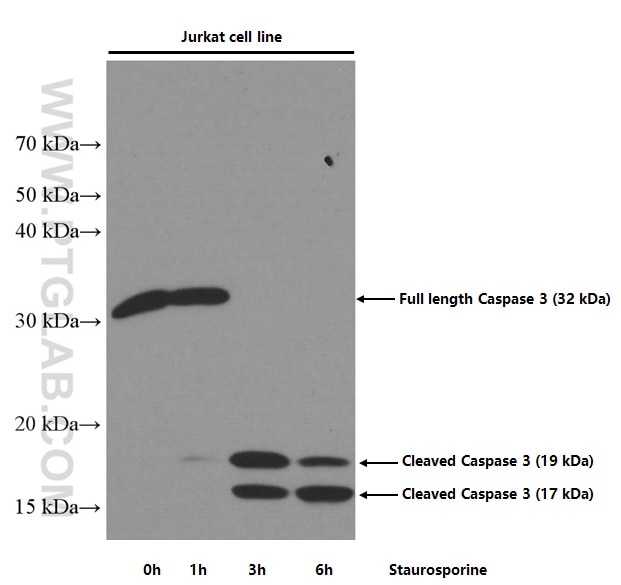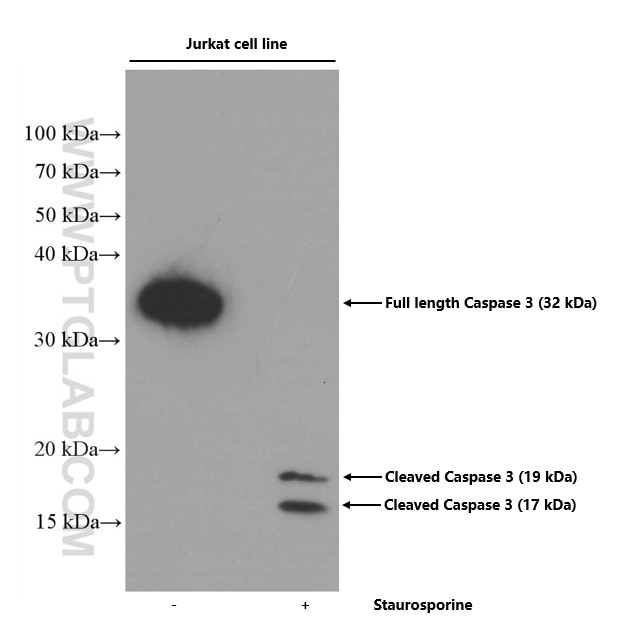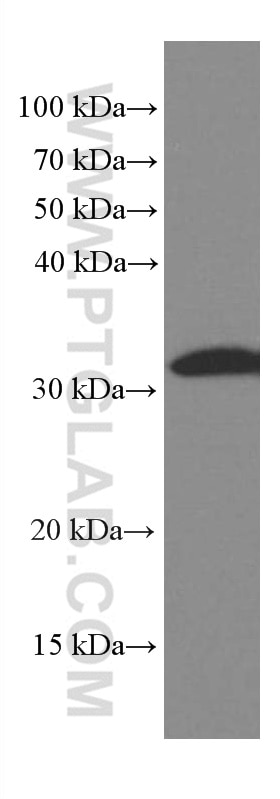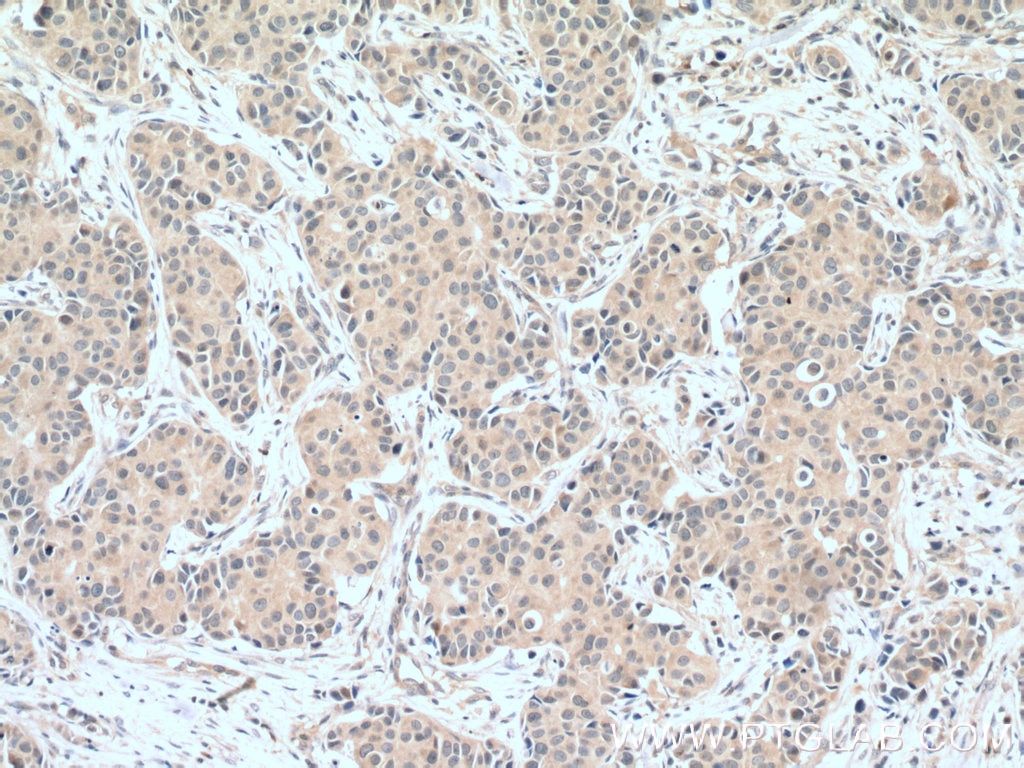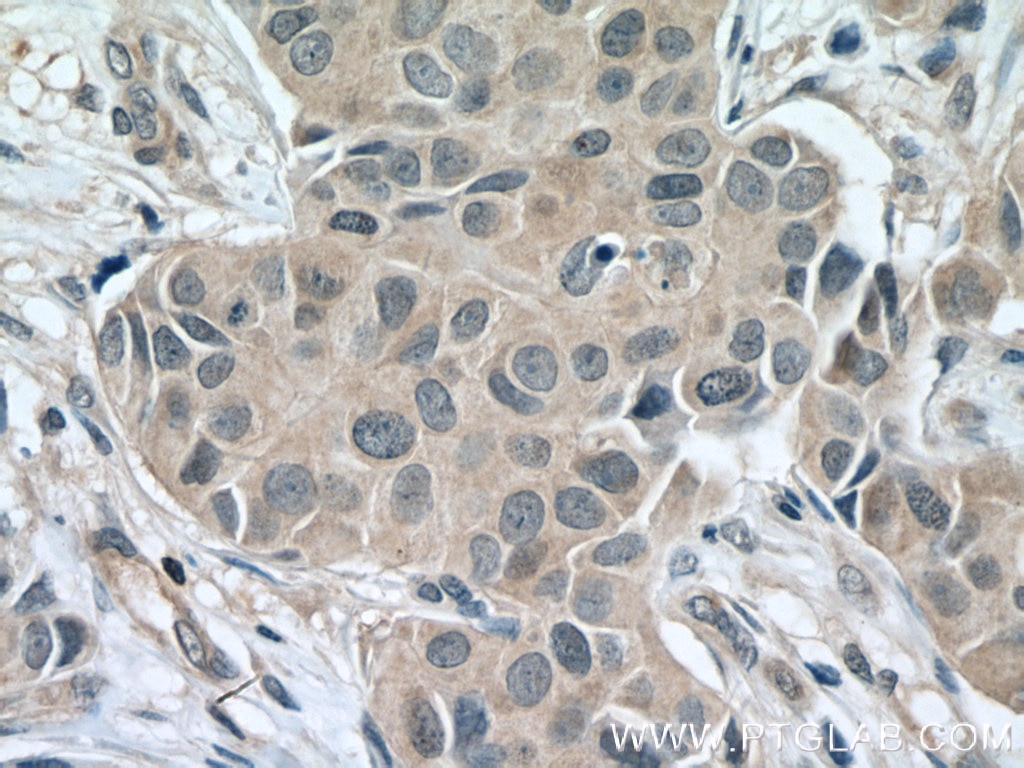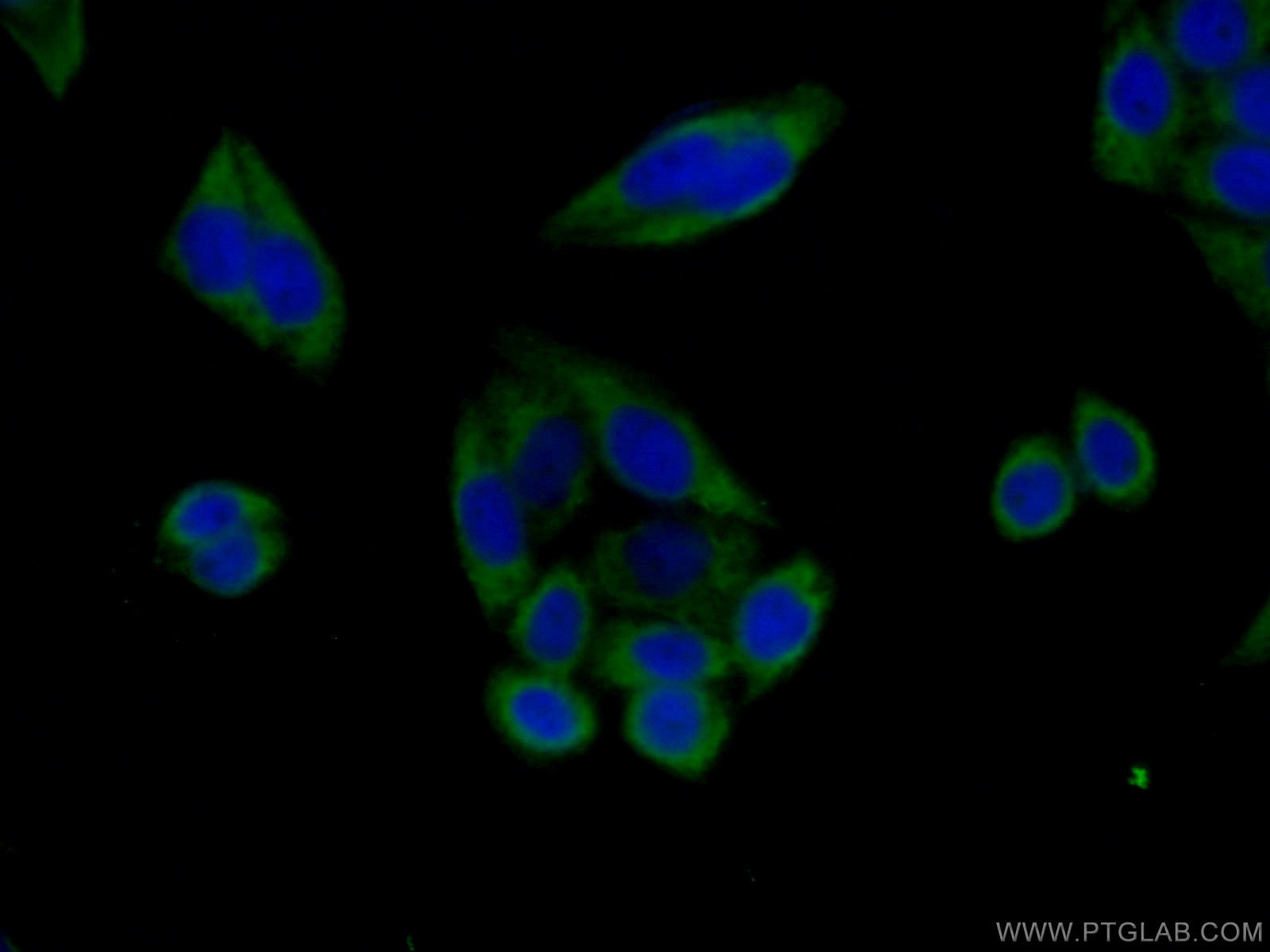Anticorps Monoclonal anti-Caspase 3(human specific)
Caspase 3(human specific) Monoclonal Antibody for WB, IF, IHC, ELISA
Hôte / Isotype
Mouse / IgG2b
Réactivité testée
Humain et plus (5)
Applications
WB, IHC, IF/ICC, ELISA
Conjugaison
Non conjugué
CloneNo.
1E7F9
N° de cat : 66470-1-Ig
Synonymes
Galerie de données de validation
Applications testées
| Résultats positifs en WB | cellules Jurkat, cellules HEK-293 |
| Résultats positifs en IHC | tissu de cancer du sein humain il est suggéré de démasquer l'antigène avec un tampon de TE buffer pH 9.0; (*) À défaut, 'le démasquage de l'antigène peut être 'effectué avec un tampon citrate pH 6,0. |
| Résultats positifs en IF/ICC | cellules HeLa, |
Dilution recommandée
| Application | Dilution |
|---|---|
| Western Blot (WB) | WB : 1:500-1:2000 |
| Immunohistochimie (IHC) | IHC : 1:100-1:400 |
| Immunofluorescence (IF)/ICC | IF/ICC : 1:50-1:500 |
| It is recommended that this reagent should be titrated in each testing system to obtain optimal results. | |
| Sample-dependent, check data in validation data gallery | |
Applications publiées
| WB | See 69 publications below |
| IHC | See 2 publications below |
| IF | See 5 publications below |
Informations sur le produit
66470-1-Ig cible Caspase 3(human specific) dans les applications de WB, IHC, IF/ICC, ELISA et montre une réactivité avec des échantillons Humain
| Réactivité | Humain |
| Réactivité citée | rat, Humain, poisson-zèbre, porc, souris, Vache |
| Hôte / Isotype | Mouse / IgG2b |
| Clonalité | Monoclonal |
| Type | Anticorps |
| Immunogène | Caspase 3(human specific) Protéine recombinante Ag25029 |
| Nom complet | caspase 3, apoptosis-related cysteine peptidase |
| Masse moléculaire calculée | 277 aa, 32 kDa |
| Poids moléculaire observé | 32-35 kDa, 19 kDa, 17 kDa |
| Numéro d’acquisition GenBank | BC016926 |
| Symbole du gène | Caspase 3 |
| Identification du gène (NCBI) | 836 |
| Conjugaison | Non conjugué |
| Forme | Liquide |
| Méthode de purification | Purification par protéine A |
| Tampon de stockage | PBS with 0.02% sodium azide and 50% glycerol |
| Conditions de stockage | Stocker à -20°C. Stable pendant un an après l'expédition. L'aliquotage n'est pas nécessaire pour le stockage à -20oC Les 20ul contiennent 0,1% de BSA. |
Informations générales
Casp3 (caspase 3), also named as CPP32, SCA-1 and Apopain, belongs to the peptidase C14A family. Caspase 3 is involved in the activation cascade of caspases responsible for apoptosis execution. At the onset of apoptosis it proteolytically cleaves poly(ADP-ribose) polymerase (PARP) at a '216-Asp-|-Gly-217' bond. Caspase 3 cleaves and activates sterol regulatory element binding proteins (SREBPs) between the basic helix-loop-helix leucine zipper domain and the membrane attachment domain. Cleaves and activates caspase-6, -7 and -9. CASP3 is involved in the cleavage of huntingtin. This antibody is specific for human caspase 3, it can recognize the 32 kDa pro-caspase 3 as well as 17 and 19 kDa cleaved-caspase 3.
Protocole
| Product Specific Protocols | |
|---|---|
| WB protocol for Caspase 3(human specific) antibody 66470-1-Ig | Download protocol |
| IHC protocol for Caspase 3(human specific) antibody 66470-1-Ig | Download protocol |
| IF protocol for Caspase 3(human specific) antibody 66470-1-Ig | Download protocol |
| Standard Protocols | |
|---|---|
| Click here to view our Standard Protocols |
Publications
| Species | Application | Title |
|---|---|---|
Sci Adv The deacetylation-phosphorylation regulation of SIRT2-SMC1A axis as a mechanism of antimitotic catastrophe in early tumorigenesis. | ||
Redox Biol Restoration of L-OPA1 alleviates acute ischemic stroke injury in rats via inhibiting neuronal apoptosis and preserving mitochondrial function. | ||
Environ Int Chemical conjugation of FITC to track silica nanoparticles in vivo and in vitro: An emerging method to assess the reproductive toxicity of industrial nanomaterials. | ||
Cancer Lett UM-6 induces autophagy and apoptosis via the Hippo-YAP signaling pathway in cervical cancer. | ||
Oxid Med Cell Longev Gastrodin Promotes the Survival of Random-Pattern Skin Flaps via Autophagy Flux Stimulation. | ||
Oxid Med Cell Longev Farrerol Enhances Nrf2-Mediated Defense Mechanisms against Hydrogen Peroxide-Induced Oxidative Damage in Human Retinal Pigment Epithelial Cells by Activating Akt and MAPK. |
